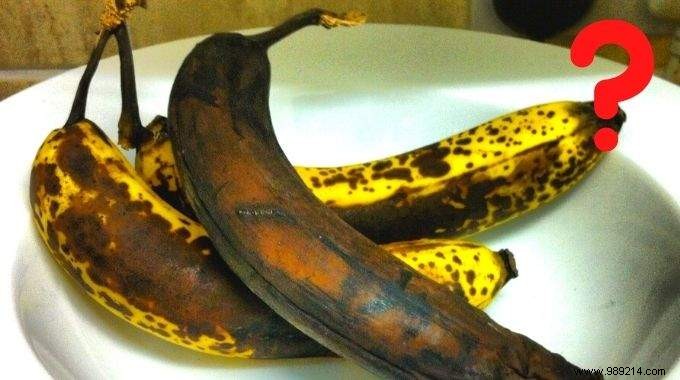
Is a black banana that is overripe edible?
I'm sure you've already asked yourself this question!
Because it's true that a banana that has taken on such a color is not very appetizing...
Generally, we say to ourselves that it is no longer good to eat and we throw it away!
But are you sure that this fruit should be wasted once the black spots cover it?
Not so sure... Because a blackened banana is the assurance that it contains even more nutrients!
So let's see together, if we can really eat overripe black bananas. Watch:
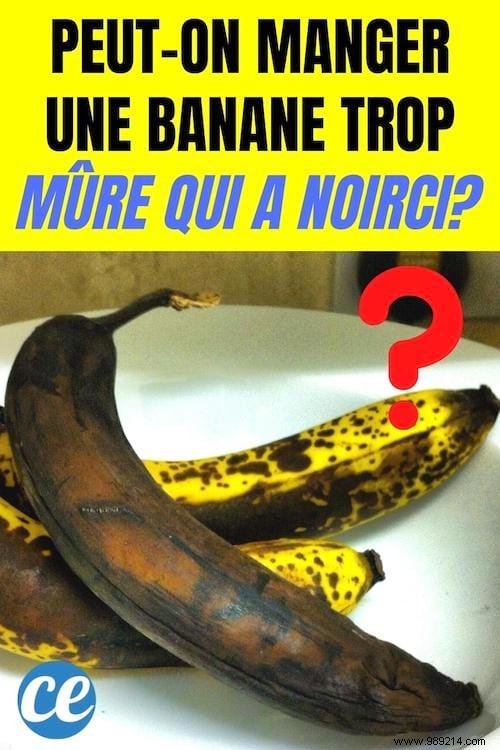
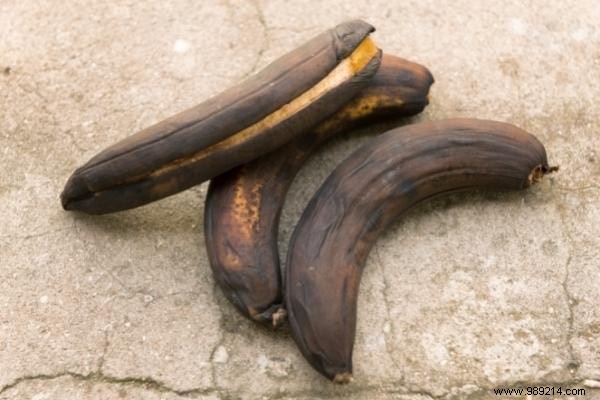
Once the bananas have darkened well, we tend to throw them away.
In fact, as long as they show no trace of mold , they can be eaten.
Moreover, it is when it is in this state that all the aromas appear!
The texture, taste and flavor change as the black spots unfold.
The banana also becomes much sweeter.
So black skin, blackheads or the end of the black fruit... we are not alarmed!
These are just the different stages of maturity of the fruit.
Oh yes.
People who put bananas in the fridge to make them stay yellow longer, stop now.
By doing this, you darken them even faster!
Because I remind you that it is the humidity and the low temperatures that alter the skin of this fruit.
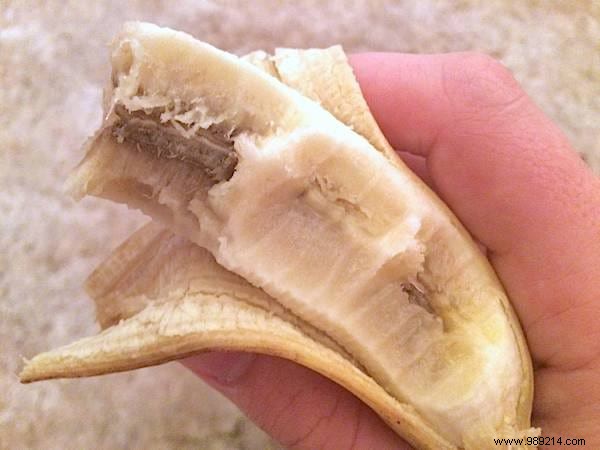
I recently baked a banana cake and something struck me.
When crushing the bananas, one of them was all black inside, but only in the middle (at the core).
There I had a doubt and said to myself:can I eat it?
So I did some research and what I found was amazing.
Bananas that have blackened in the middle are mostly not safe to eat.
Bananas affected by this disease can be a nice yellow color on the outside...
...And yet, being black in the middle on the inside.
This phenomenon is called "black core syndrome" and can be caused by 2 things.
Either it is a fungal infection (presence of a fungus called pseudocercospora fijiensis).
Either it is a sign of bruising of the skin following improper handling.
For example when it falls or is crushed in warehouses.
In both cases, do not eat the black present in the center of the flesh.
It can make you sick and give you diarrhea and vomiting.
If, on the other hand, the rest of the banana has kept a good color, you can eat this part.
Just don't eat the black parts, as they are no longer edible.

In fact, it is quite simply the color of the skin that indicates the degree of ripeness of the banana.
If your fruit is a little green or pale yellow and still firm, it's not ripe.
You just have to wait a few days to be able to consume it.
If you want it to ripen faster, put the banana next to an apple.
The gases emitted by the apple (ethylene) allow the surrounding fruits to ripen more quickly.
Once more ripe, the yellow of the banana becomes more pronounced.
Then it becomes covered with brown spots that indicate an already advanced maturity.
Finally, it ends up turning black. At this point, the banana becomes very ripe.
But even if it is, don't waste it.
There is a trick for the banana to regain its firmness and a slightly more yellow color.
Place your fruit in a freezer bag and fill it with raw rice.
Close tightly so that there is no more air inside and leave to rest for 1 hour.
Take the fruit out of the bag and dry it with a hair dryer set to medium heat.
The banana then regains its original firmness and color in 3 or 4 minutes.
How is this possible?
Quite simply because this technique makes it possible to absorb the humidity which gives the famous black color to this fruit.
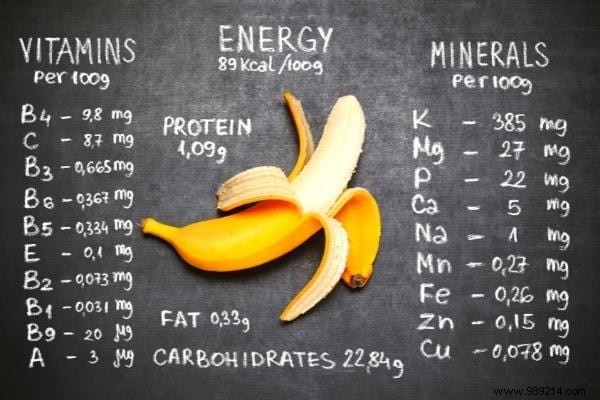
Eat bananas, it's just super good for your health , especially when fully ripe.
Beyond the fact that they are loaded with carbohydrates, they are above all packed with vitamins.
Know that it is the fruit that contains the most vitamin B6, a vitamin that I remember helps reduce fatigue.
It is also well loaded with potassium, a mineral that plays an important role in the proper functioning of our body.
The advantage of a blackened banana is that it transforms the starch (rather present in an unripe banana) into simple sugar.
Result:the riper the banana, the easier it is to digest and richer in simple sugar.
And that's great for athletes.
It gives more energy and the body digests better.
I will even go further.
A Japanese study explains that the more the banana ripens, the more it produces a substance called TNF.
This substance is known to make the immune system stronger and prevent cancer cells!
In short, a banana that is very or too ripe should not be considered rotten!
On the contrary, it contains new super healthy nutrients.
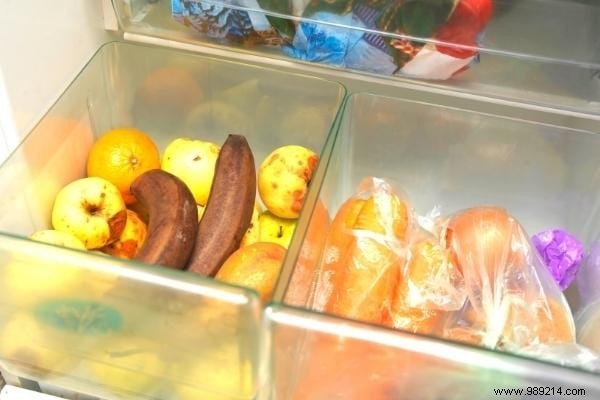
Now that you know that it is possible to eat overripe bananas , let's see how to store them.
Know that a very ripe banana can be stored perfectly in the freezer.
Whether in small cut pieces or whole for that matter.
If it's in pieces, freeze them flat in a container without overlapping then seal tightly.
Once out, you can make banana sorbets or smoothies.
You can even use them for a banana cake by letting them thaw for 4 hours.
If you plan to freeze them whole, no problem either.
You simply remove the skin and put them in a plastic container that you close.
Once out, you can use them to make banana cakes for example.
Finally, I also invite you to take a look at these tips.
They allow you to keep your bananas longer without going through the refrigerator.
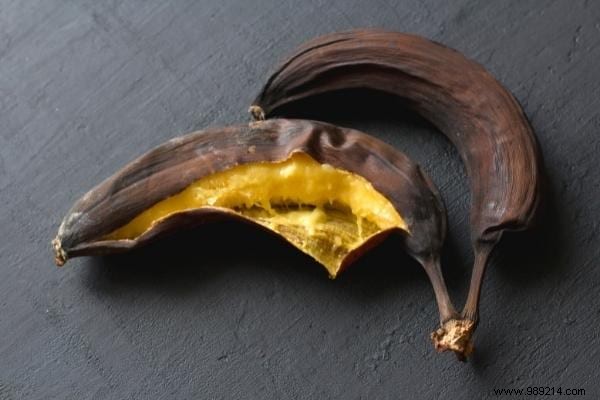
There are many recipes using overripe bananas.
You just have to remember that a ripe banana is soft.
So don't count on it being used in whole slices when it has darkened.
On the other hand, it can be easily crushed with a fork.
Do you see where I'm coming from?
Once crushed, this fruit puree mixes easily in a lot of culinary preparations.
Beautiful tropical flavors in the mouth, especially for desserts, it definitely does!
In addition, overripe bananas allow you to put less sugar in your desserts.
Indeed, the more it darkens, the more the banana is loaded with sugar.
So no need to add tons of powdered sugar.
And that's good for our line.
So no more excuses for throwing away the blackened bananas.
You will be able to vary the pleasures of recipes with this fruit.
Flambéed bananas, baked bananas, banana compote, chocolate banana tart...
The list is as long as my arm.
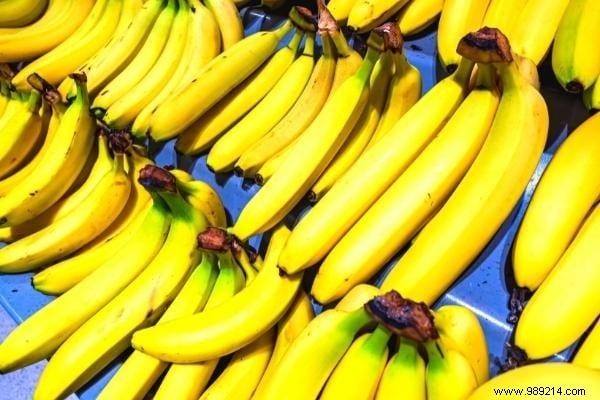
To choose your bananas well, you need to know when you plan to eat them.
For immediate consumption, choose yellow bananas.
And as we saw above, it doesn't matter if they have brown or black spots.
It just means it's sweeter.
For consumption after 1 week or 2, choose green bananas.
They thus have time to ripen without rotting.
But be careful, if you buy the green bananas, don't drop them.
Otherwise they can catch the famous black core syndrome!
There you go, you now know that you can safely eat ripe blackened bananas :-)
If they show no signs of mold, they are neither indigestible nor toxic.
No fear of having a stomach ache!
So go all out to mix them into recipes for muffins, pancakes, ice cream, donuts...
Using a thermomix, if you have one, is great for making delicious banana desserts.